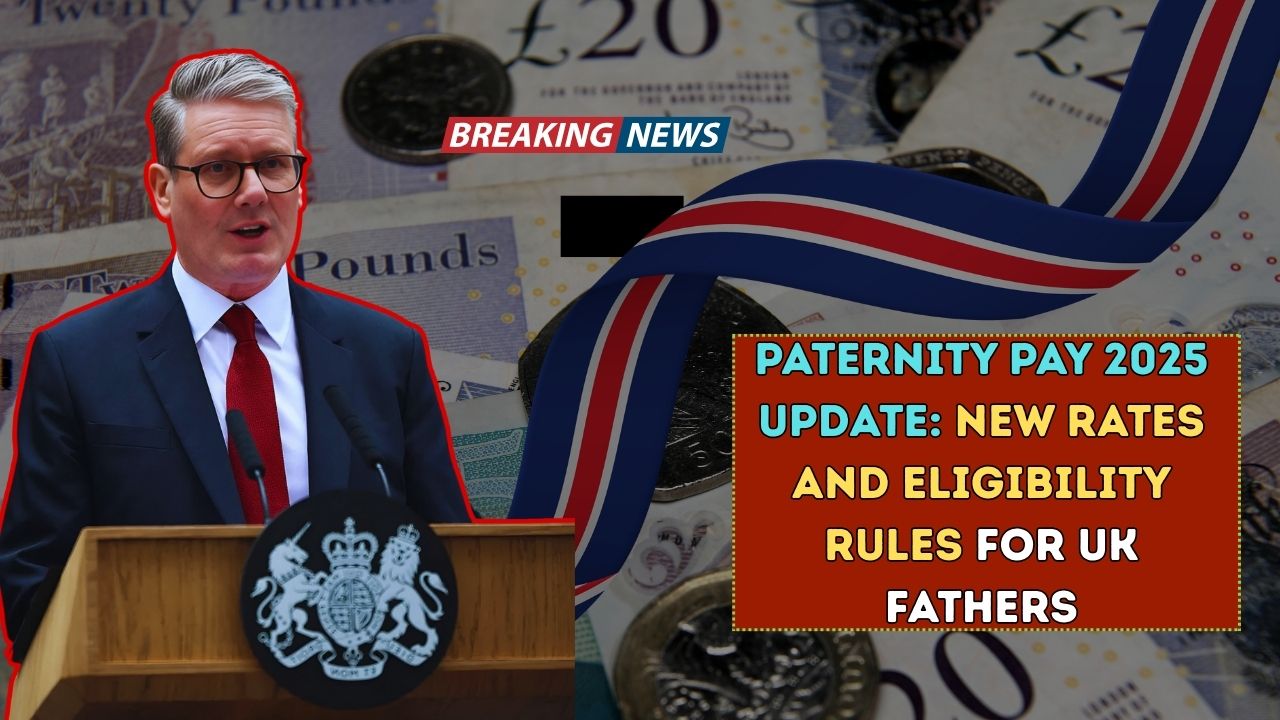The Department for Work and Pensions has new information regarding paternity pay for 2025 and new fathers all around the UK will be happy. New changes in the government show that there is a commitment in increasing the support provided to families. The UK government will be providing access to statutory paternity pay of £187.18 weekly.

Modest Change Mirrors Inflation Trends
From April 2025, eligible fathers can access statutory paternity pay and receive £187.18 which will be an increase to the previous £184.03 making it a 1.7% increase. This increase is also in line with the Consumer Price Index inflation rate which allows benefits to keep up with the cost of living.
Paternity pay has also led to increasing concerns. The new increased rate will be around £4.99 for full time employees earning the 37.5 hours weekly. This amount is far below the National Living Wage of £12.21 which is concerning. The new paternity pay will be around 59% lower than the minimum wage which could drive the desire for fathers to take time off.
Eligibility Criteria Still the Same
Fathers looking to claim statutory paternity pay in 2025 will need to satisfy certain employment prerequisites. Continuously employed with the same employer for no less than 26 weeks leading up to the ‘qualifying week’ which is defined as the 15th week before the expected week of the baby’s birth. Also, the average weekly earnings during this period should be at least £125 per week over an 8-week timeframe.
Under this payment model, fathers will be paid either £187.18 per week (as the maximum allowed payment during the period) or 90% of their average earnings, whichever is lower. These sectioned payments prevent disproportionate gains for higher income earners while also safeguarding lower earners from receiving benefits that are incompatible with their earnings.
Positive Changes for Greater Flexibility Are Coming
As of 2026, more paternity leave flexibility will be available due to recent legislation. From April 2024, fathers will be able to divide their two-week leave into two one-week segments instead of having to take two weeks consecutively. This change is very beneficial to families with an earlier returning to work mother as it enables better attendance management for the available childcare.
More changes are expected due to the Employment Rights Bill, which will give the fathers the ability to take paternity leave as early as day one of their employment in 2026. Many fathers will be unable to take advantage of this until the 26-week period of continuous employment which currently disqualifies many fathers who start new jobs or change jobs around the time of birth.
Government Review Signals Future Changes
Most importantly, the government started a comprehensive review on all parental leave benefits in July 2025, which will take 18 months to complete. This review looks at whether the current policies in place support maternal health, economic productivity, and the wellbeing of children.
The Women and Equalities Committee has already proposed some changes, which include a paternity leave pay raised to match the first six weeks of maternity pay at 90% of average earnings. This is likely to change the take up rate since only a third of eligible fathers take up paternity leave, and the reason for this is largely financial.
Paternity leave policies are beneficial only to fathers who are salaried employees, which means the self-employed are wholly ineligible for the current maternity leave provisions. Advocacy groups are calling for a “Paternity Allowance” that would mimic the current Maternity Allowance provisions, which would assist a large number of construction and gig economy workers.
If the review’s recommendations are accepted, the economic outlook of the UK is expected to change drastically, with parental support costing around £2.68 billion and six-week paid paternity leave at 90% of earnings. This would also mean the UK would be moving closer to European policies that are some of the least generous in the continent.
Planning ahead for 2025, the small pay bump does help, and the fact that a wider review is being done does make me a bit more optimistic that, in the future, improvements done to the support for paternity leave will be more considerable.
